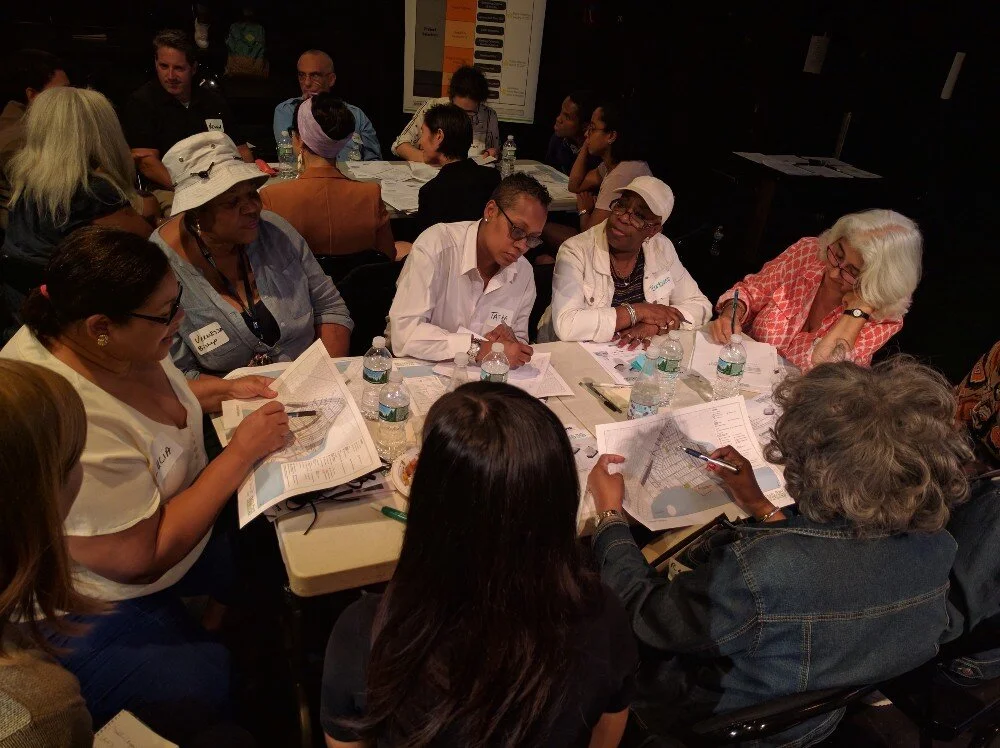
Ten-Year Capital Strategy
We’re investing $133.7 billion over the next decade to build a better NYC.
We are pleased to present the Fiscal Year 2022 Ten Year Capital Strategy (TYCS) that details how we plan to invest $133.7 billion over the next decade to improve infrastructure, including roads, schools, bridges, water and sewer facilities, and transportation systems in neighborhoods across the five boroughs.
Overview of $133.7 Billion in Planned Spending
-
By Agency
Each of the following agencies will be responsible for making capital investments over the next decade.

-
By Lifecycle Category
The City is investing to maintain and replace the assets we have today, while expanding for the New York of tomorrow.

-
By Service Category
New Yorkers will benefit from investments across a broad range of infrastructure and facility types.

-
By Funding Source
The City’s ambitious capital strategy leverages a mix of City, State, Federal, and other funding sources.

Guiding Principles:
The City of New York will use the following overarching guiding principles to help develop our long-term investment and planning strategies. They function as guideposts that enable more consistent capital planning approaches within and across agencies and throughout the city’s varied and dynamic neighborhoods. By observing these principles, we will implement capital planning that furthers an equitable, sustainable, and resilient city for today’s New Yorkers, and for those who will live in this city for generations to come.
Investment Priorities:
The City will advance the following five capital investment priorities that are aligned to the City’s programmatic and policy priorities. These priorities cut across the City’s capital agencies and help inform agency planning and project completion, as well as frame long-term capital investment allocation discussions.
TYCS Components:
- An Overview of Spending that shows the allocation of our capital budget across agencies, program types, and lifecycle categories
- Guiding Principles that provide City agencies with a long-term framework to use in developing their capital project portfolios and underlying planning processes.
- Investment Priorities help City agencies make capital investments that reflect citywide policy and strategic goals.
- A Financing Program section that provides a detailed look at the City’s capital finance program.
- A Program Detail by Agency section Detail pages are available in the report on pages 53 through 146that provides a deeper dive into specific City agencies’ capital investments.
The TYCS is distinct from both capital budget financial documents and other citywide strategic plans, such as OneNYC. Mandated by the New York City Charter, the TYCS provides a venue for the City to demonstrate the comprehensive capital planning that the City undertakes as part of its responsibility to all New Yorkers, across all neighborhoods, and explain the connection between capital investment and strategic priorities. It is designed to help prioritize investment decisions across all capital agencies and clearly communicate to the public an integrated approach to capital planning across infrastructure types, in line with the growth of the city.
COVID-19 and the City’s Capital Program
In the Spring of 2020, New York City became the epicenter of the country’s COVID-19 pandemic. Virtually overnight the City’s two-year tax revenue forecast was lowered by nearly $9 billion. At the same time, the City was incurring billions of dollars in unexpected costs to save lives, protect New Yorkers’ health and safety, and provide food and shelter.
On March 20, Governor Andrew Cuomo signed an Executive Order entitled Policies that Assure Uniform Safety for Everyone (“PAUSE”). The order was designed to limit the spread of the virus by temporarily closing designated non-essential business and activities statewide. Initially all construction was considered essential, but the order was later clarified to reflect that nonessential construction must shut down. As a result, the City had to discontinue work on capital projects unless they were related to COVID-19 recovery, health, life, safety, or legal mandates.
On April 28, the Governor announced that New York would begin to un-PAUSE, with phased-in reopening of closed sectors on a regional basis beginning in mid-May, though restrictions would be extended for harder hit areas like New York City.
On June 13, PAUSE restrictions were lifted for New York City. The City began to restart active construction projects and carefully resumed other select capital projects. In light of the pandemic, the City had to make tough investment choices while facing unprecedented fiscal uncertainties and severe budget constraints. This included shifting funds to ensure that there were enough resources to combat the immediate health emergency.
On January 25, 2021, the City lifted the remaining capital restart restrictions and authorized a return to pre-COVID capital approval processes on a staggered basis. By April this was complete, and the City’s capital process functioned as before. As the City continues to experience the human and financial impact of COVID-19, this strategy aims to improve the City’s infrastructure over the next decade in a manner consistent with our commitment to fiscal responsibility, in alignment with the guiding principles and investment priorities discussed within, and driven by our long-term recovery agenda.
A more integrated approach to capital planning
Comprehensive capital planning is not just about the projects that are funded, but also about the processes, principles, and priorities that guide our approach and decision-making to ensure that City assets and infrastructure meets New Yorkers’ needs today and in the future. The City’s strategy over the next ten years highlights how we intend to make substantial investments in capital projects that advance equity and account for neighborhood and citywide needs, with a fiscally responsible approach that adapts to changes in the City’s budget.
This TYCS also illustrates how the City uses data and community input to inform and humanize the capital planning process. Beyond this strategy, City agencies work with each other daily to share best practices, coordinate project planning and delivery, and integrate new and changing information into our collective planning in a consistent way. This collaboration has and will continue to produce resources and tools that increase transparency and contribute to a more informed public, and we hope a strengthened trust in the robust planning and future of our New York City.
By following our guiding principles and directing funds toward our investment priorities, we will ensure that the City’s capital spending will be mindful of the unique neighborhood needs throughout the five boroughs and help to build a stronger and fairer city for all New Yorkers.

